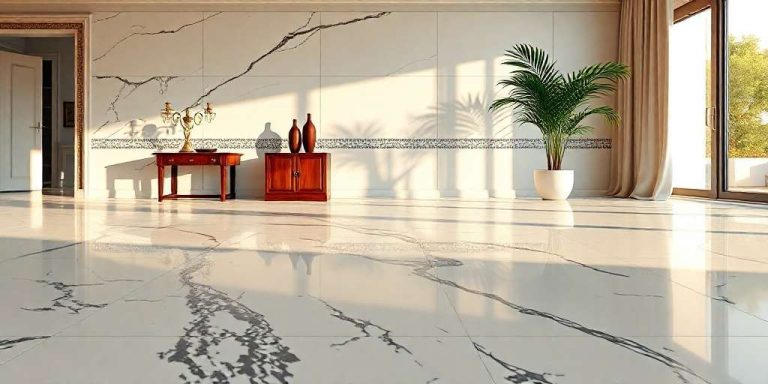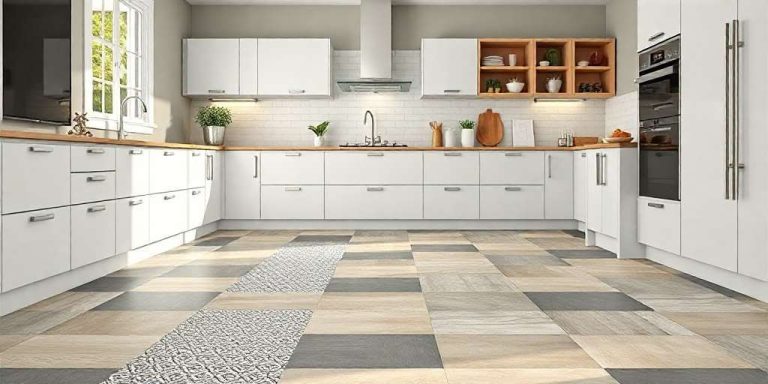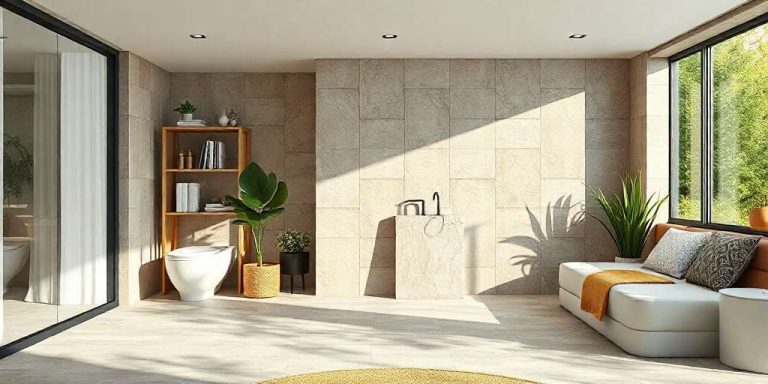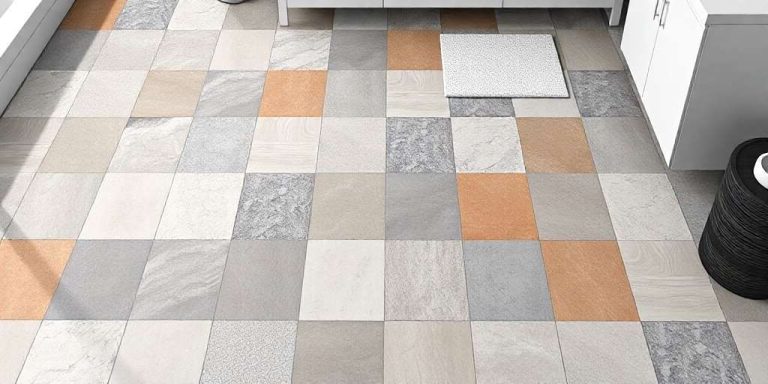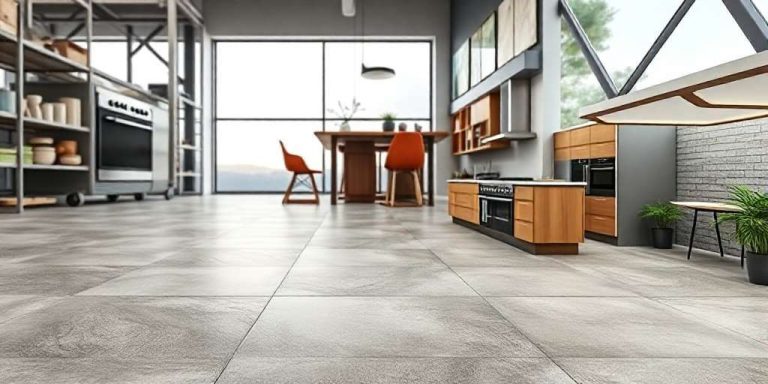Natural Stone Tile: A Comprehensive Guide for Your Home
Natural stone tile is a popular choice for flooring and wall applications due to its natural beauty and durability. Various types of natural stone tiles, including marble, granite, and slate, offer unique characteristics suited for different environments. These tiles can enhance both indoor and outdoor spaces, providing a luxurious aesthetic. Understanding their maintenance needs and installation processes is essential for homeowners considering this premium flooring option.
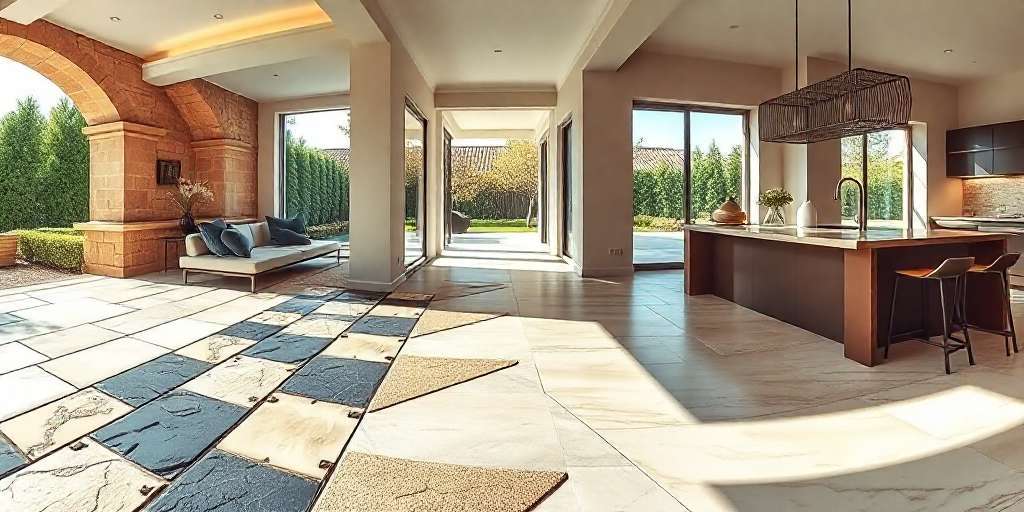
Understanding Natural Stone Tile
Natural stone tiles are renowned for their timeless beauty and unique characteristics. They are an excellent choice for various spaces, combining aesthetics with functionality.
Common Types of Natural Stone Tiles
Marble and Its Unique Characteristics
Marble is celebrated for its luxurious appearance, featuring stunning veining and a wide range of colors. This metamorphic rock is perfect for creating elegant surfaces in both residential and commercial settings. It tends to be softer than other stones, making it prone to scratching, but with proper care, its beauty can be preserved.
Granite Benefits and Uses
Granite is one of the most durable natural stones available, resistant to heat, scratches, and stains. This igneous rock is ideal for busy kitchens and high-traffic areas. Its unique patterns and rich colors allow for diverse design applications, ensuring every installation is one-of-a-kind.
Slate for Indoor and Outdoor Spaces
Slate is recognized for its natural, rustic appeal and versatility. This metamorphic stone is naturally slip-resistant, making it a popular choice for both indoor flooring and outdoor patios. It comes in various colors and finishes, adding texture and depth to any design.
Limestone and Its Maintenance Needs
Limestone is a sedimentary rock known for its softer texture and earthy tones. While it offers a classic look, it requires regular maintenance to avoid staining and wear. Sealants are essential to protect limestone from spills and moisture, particularly in kitchens and bathrooms.
Sandstone Texture and Applications
Sandstone features a unique, granular texture that enhances its aesthetic appeal. This stone is suitable for both flooring and wall applications, both indoor and outdoor. Its natural tones blend well with various styles, from rustic to contemporary, making it a versatile choice.
Natural Stone vs. Porcelain and Ceramic Tiles
When comparing natural stone to porcelain and ceramic tiles, it’s clear that natural stone offers distinct advantages. While porcelain and ceramic may provide more uniformity and wear resistance, natural stones bring unparalleled beauty and uniqueness that synthetic materials often cannot match.
Natural Stone Tile Collections and Finishes
Stone Effect Tiles and Wood Effect Tiles
These innovative tiles replicate the appearance of genuine stone or wood, providing the aesthetic without the challenges of maintenance associated with real materials. They are a practical solution for homeowners seeking style without compromising on durability.
Large Format and Textured Finishes
Large format tiles create a seamless look, minimizing grout lines and providing a modern, expansive feel. Textured finishes add depth and character, enhancing the tactile experience of the flooring, making them suitable for various applications.
Choosing the Right Natural Stone Tile Flooring for Your Home
Selecting the ideal natural stone tile for flooring enhances the aesthetics and functionality of different spaces within a home.
Natural Stone Tile Floors in Different Rooms
The choice of natural stone tiles can vary significantly depending on the room’s purpose and design requirements. Here are some common applications:
Flooring for Kitchens and Bathrooms
In kitchens and bathrooms, natural stone tiles like granite and porcelain are preferred for their durability and resistance to moisture. Their non-porous nature ensures that they withstand spills and cleanup, while providing an elegant appearance.
Living Room and Bedroom Applications
For living rooms and bedrooms, marble and limestone tiles offer a luxurious feel. Marble’s unique veining adds character, making each tile piece distinct. Limestone creates a warm ambiance that complements various interior styles.
Outdoor Patios and Facades Natural Stone
Outdoor areas benefit from slate and sandstone, as their textured surfaces provide better traction. These materials are also resistant to various weather conditions, making them ideal for patios and outdoor facades.
Matching Natural Stone Tiles with Interior Styles
The aesthetic appeal of natural stone can harmonize with various interior design styles.
Rustic, Modern, and Transitional Looks
Rustic designs often utilize rough-textured stones like slate, while modern interiors may favor sleek finishes with polished granite. Transitional looks effectively blend both styles, enabling the use of mixed materials.
Combining Wood Natural Stone and Porcelain Tiles
Combining wood-effect natural stone with porcelain tiles offers a unique visual contrast. This blending technique enhances warmth and invites a sophisticated yet approachable ambiance.
Selecting the Best Stone Natural Stone for High-Traffic Areas
Durability is paramount when choosing tiles for high-traffic zones. Natural stones such as granite and slate are ideal, as they resist scratches and wear over time. Ensuring a robust choice will maintain both aesthetics and longevity in busy areas.
Installation Process for Natural Stone Tile Flooring
The process of installing natural stone tile flooring involves several essential steps to ensure a successful outcome. Proper preparation, measurement, and adherence to techniques will lead to a stunning and durable finish.
Preparing Surfaces for Stone and Wall Floor Tiles
Surface preparation is crucial for a stable installation. Start by clearing the area of all debris and ensuring the subfloor is clean and dry. If working with a wall, ensure that it can support the weight of the tiles. A flat and level surface is vital, so consider using a leveling compound if necessary to create a smooth base.
Cutting and Laying Natural Stone Tiles
Cuts may be necessary to fit tiles around edges and obstacles. Utilize a wet saw or tile cutter designed for stone to achieve clean cuts. Begin laying tiles from the center of the room to ensure even distribution and an aesthetically pleasing layout. Apply adhesive evenly to the back of each tile, pressing firmly into place, ensuring proper spacing for grout lines.
Adhesives and Grouts for Natural Stone Tiles
Selecting the right adhesive is key for holding tiles securely. A thin-set mortar specifically designed for natural stone helps ensure a reliable bond. After the tiles are laid, grout options should complement the stone’s color and texture while providing sufficient flexibility to prevent cracking. Consider a sanded grout for wider joints.
Sealing and Protecting Natural Stone Floors
Sealing natural stone tiles is essential for longevity. A high-quality stone sealer should be applied after installation to protect against moisture and stains. Regular reapplication of the sealer, typically every one to two years, will help maintain the tiles’ aesthetic appeal and durability.
Common Installation Challenges and Solutions
- Uneven surfaces: Level the area with a floor leveling compound before installation.
- Dust and debris: Maintain a clean workspace for optimal adhesion.
- Tile breakage: Handle tiles with care and use appropriate cutting tools.
- Improper grout application: Follow recommended guidelines for grout consistency and placement.
Maintenance and Care for Natural Stone Tile Floors
Proper maintenance and care are essential for preserving the beauty and longevity of natural stone tile floors. Adopting a routine cleaning and maintenance regimen ensures that these surfaces remain in excellent condition and continue to enhance the aesthetic appeal of any space.
Regular Cleaning Tips for Natural Stone Flooring
Keeping natural stone tiles clean is vital to prevent damage and staining. The following methods are recommended:
- Use a soft-bristle broom for sweeping dust and debris away regularly.
- Mop with a pH-neutral cleaner specifically designed for stone surfaces to avoid harsh chemical reactions.
- Consider using a microfiber mop to capture finer particles effectively.
Re-sealing and Long-Term Protection
To maintain the integrity of natural stone tiles, periodic re-sealing is necessary. This process not only protects the stone from moisture and stains but also enhances its natural shine. A general guideline is to re-seal every one to two years depending on traffic and usage.
Handling Stains and Damage on Stone Marble and Granite
Stains can occur despite preventive measures. To manage them:
- Blot spills immediately with a soft cloth to minimize absorption.
- Use cleaners specifically formulated for stone to treat stains, following instructions carefully.
- For deep stains, consult professionals for specialized stain removal techniques.
Avoiding Water Damage in Showers, Bathrooms, and Outdoor Areas
Water exposure can lead to significant damage if not controlled. It’s important to:
- Ensure proper drainage in outdoor settings and bathrooms to prevent water pooling.
- Wipe down wet areas after use to minimize moisture retention.
Recommended Products for Natural Stone Tile Care
Choosing the right products can significantly influence the maintenance routine. Recommended items include:
- pH-neutral cleaners that are gentle on stone surfaces.
- Stone sealers designed for the specific type of natural stone.
- Soft cloths and mop heads to avoid scratching the surfaces.
Design Ideas and Project Inspirations with Natural Stone Tiles
Natural stone tiles offer unique aesthetic qualities and functional versatility. They can enhance various living spaces both indoors and outdoors, making them a great choice for a range of design styles.
Natural Stone Tile Projects for Indoor and Outdoor Living
Incorporating natural stone tiles into residential projects adds elegance and durability. Popular applications include:
- Using slate for outdoor patio areas to create a rustic yet modern environment.
- Installing marble flooring in entryways and halls to make a striking first impression.
- Utilizing granite for kitchen backsplashes, blending style with practicality.
Combining Stone Natural with Other Materials for Dynamic Spaces
Creating contrast can elevate interior design aesthetics. Consider integrating natural stone with:
- Wood elements to warm up spaces and add texture.
- Glass features that enhance natural light and space perception.
Using Stone Marble and Natural Stone Collections in Kitchens
Marble and other natural stones can transform kitchen spaces. Popular uses include:
- Elegant countertops that serve as focal points.
- Backsplashes that offer a cohesive and stylish look.
Innovative Uses of Stone Effect Tiles in Modern Homes
Stone effect tiles mimic the beauty of natural stones while providing additional flexibility. Their innovative applications range from:
- Wall installations in living areas to create dramatic visual impacts.
- Custom shower enclosures that add a luxurious feel to bathrooms.
Enhancing Facades Natural Stone and Patios with Stone Tile Flooring
Exterior applications of natural stone tiles can elevate curb appeal. Options include:
- Using patterned tiles for driveways to create a distinctive look.
- Incorporating stone tiles into landscape designs for pathways and patios, blending functionality with aesthetics.
Cost and Value Considerations for Natural Stone Tiles
When selecting natural stone tiles, understanding the cost and value implications is essential. This section explores pricing factors, budgeting for installation, and how these materials can enhance property value.
Price Factors Based on Stone Collection and Tile Size
The cost of natural stone tiles varies widely depending on several factors. Key elements include:
- Type of stone: Rare stones like marble tend to be more expensive than common varieties such as limestone.
- Tile size: Larger tiles often incur higher costs due to increased material usage.
- Quality and finish: Higher-grade finishes and craftsmanship can significantly influence the final price.
Budgeting for Installation and Maintenance Costs
Installation costs are another major consideration. Homeowners should account for:
- Labor: Hiring professionals experienced in stone tile installation can add to overall expenses.
- Preparation: Surface preparation might involve additional costs, particularly if structural adjustments are needed.
- Maintenance: Regular upkeep, including resealing and cleaning, should be factored into long-term budgeting.
How Natural Stone Tiles Add Value to Your Home
Investing in natural stone tiles can significantly enhance a property’s resale value. Their durability, aesthetic appeal, and timeless nature are attractive to potential buyers. Properties featuring quality stonework often appreciate more than those with conventional flooring options.
Choosing Between Premium Floor Tiles and More Affordable Options
Selecting between premium natural stone tiles and budget-friendly alternatives requires careful consideration. Factors to evaluate include:
- Durability: Premium materials can withstand higher traffic and are less likely to chip or stain.
- Aesthetic appeal: Higher-end options may offer unique colors and textures that elevate interior design.
- Long-term investment: Cheaper tiles may not last as long, potentially costing more in repairs or replacements over time.


